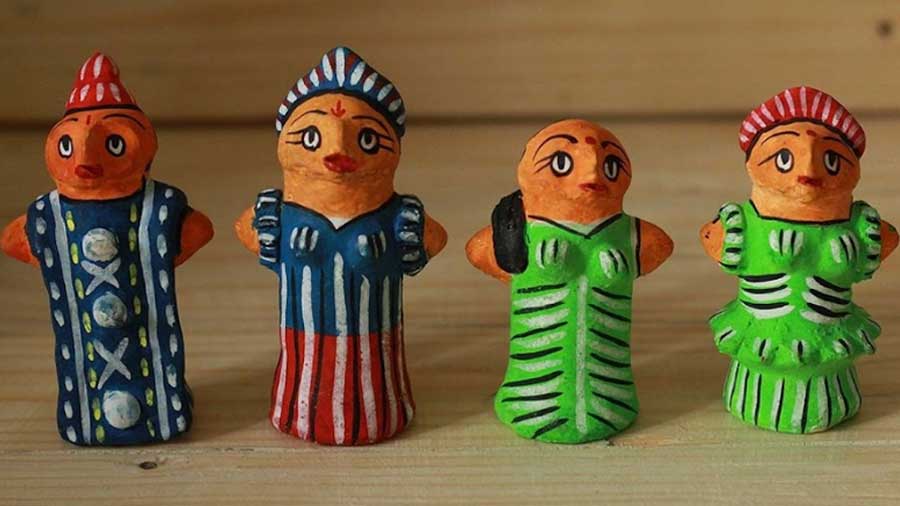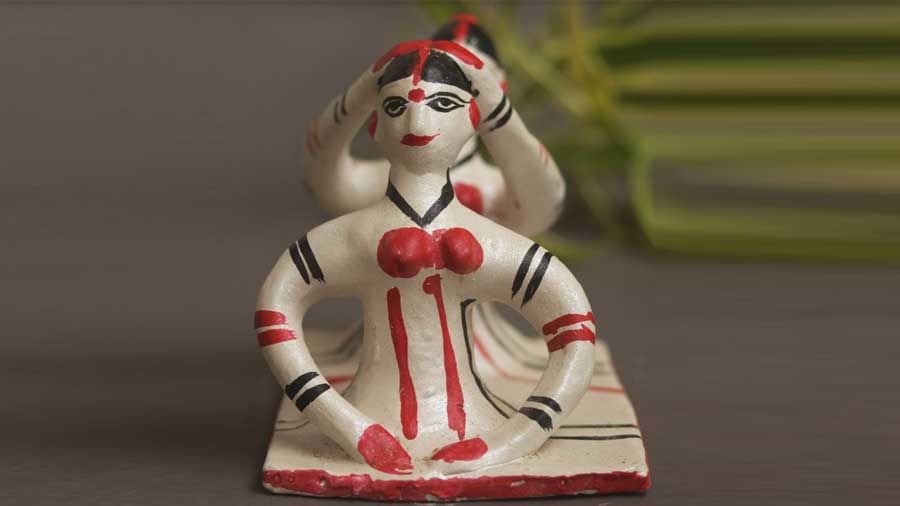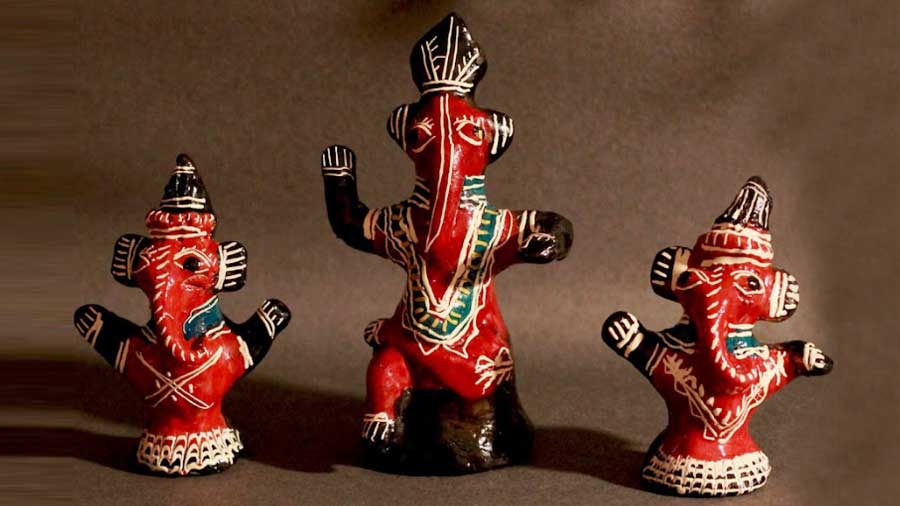The Bengal Store’s curation has essentially been capturing the essence of Bangla since August 2019, be it with Bishnupur’s soft clay ‘Heem Putuls’, the Kanthalia dolls of Murshidabad or other hand-modelled figurines unique to certain districts of Bengal. “The genre of dolls that we are showcasing, and transacting are almost extinct. We have brought in 4-5 genres of dolls and soon we will bring in more because our objective is to be the one-stop shop for this particular craft legacy from Bengal. We are looking for artisans who make rare dolls from all the 23 districts of West Bengal,” shares Indrajit Sen, Director of The Bengal Store.

A family of ‘Heem Putul’ — consisting of a father, mother and two daughters The Bengal Store
This online store is not only reviving the forgotten crafts but is also supporting the artists — specifically the last generations of rare doll-makers — in order to sustain their legacy. “We are trying our best to stand beside these artists and support them by buying as many products from them, as we can” adds Sen.

Artisan Murlidhar Kumbhakar with his son The Bengal Store
The Bengal Store lines up traditional hand-crafted figurines like Galar Putul (miniature shellac dolls unique to the East Midnapore district), earthen baked clay dolls from South 24 Parganas’ Mojilpur, Bishnupur’s Heem Putul (finger-sized carved dolls); these hand-crafted collectables require specific skill sets to produce and are a significant part of Bengal’s artistic legacy.
Handcrafted by a group of women belonging to the Faujdar family in Bishnupur, Heem Putul gets its name from ‘hingul’, a red mineral comprising mercury sulphide, that is used to paint them. This group of women from Bishnupur have kept this art form alive; the soft clay dolls are sun-dried and then dyed with herbal, nature-friendly colours.

A mother arranges her daughter’s hair in this Kanthalia-style doll The Bengal Store
The Kanthalia dolls are traditionally made by the potter communities of Murshidabad’s Kanthalia; the dolls are made to depict scenes from a traditional Bengali household which adds to their rustic appeal (a mother caring for her daughter’s hair, two women grinding pulses etc). The Bengal Store’s page works as a catalogue of several indigenous crafts and also shares the history of the communities or craft families behind each artisanship. For instance, their website confirms that Sandhan Pal and his family are the only artisans who are sustaining the art of making Kanthalia dolls in Murshidabad.

A set of three 'Galar Putul' Ganesh figurines The Bengal Store
The renowned shellac dolls or Galar Putul from Midnapore are made from hand-pressed soil gathered from white ant hills. The 62-year-old Brindaban Chanda of Paschimsai village is one of the few artisans who make them. These dolls are sundried, baked and then layered with shellac colour. One can buy a set of elephants and horses, a set of two tortoise figures and a set of three Ganesh figures from The Bengal Store.
“The only way to keep the art form alive is to encourage the young artists to take interest in this rare doll-making,” remarks Sen.
